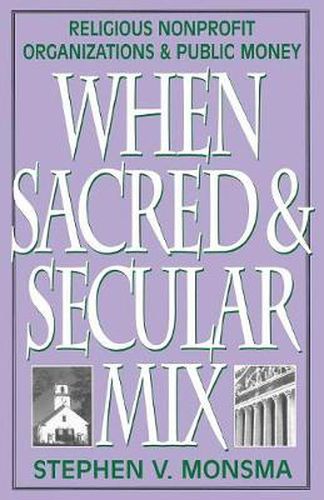Readings Newsletter
Become a Readings Member to make your shopping experience even easier.
Sign in or sign up for free!
You’re not far away from qualifying for FREE standard shipping within Australia
You’ve qualified for FREE standard shipping within Australia
The cart is loading…






Despite America’s traditional emphasis on the separation of church and state, both in theory and practice, few are aware of the hundreds of millions of public dollars that flow annually to religiously based nonprofit organizations. Based on a nation-wide survey of nearly 800 such groups, Stephen V. Monsma’s study explores the implications of this financial partnership. Although most religiously based groups currently receiving tax dollars do not compromise the autonomy of their religious beliefs, the author argues that the legal principles under which the Supreme Court has approved public funding has placed their religious freedom in a legally vulnerable position. The author develops a new legal principle, positive neutrality, that both justifies public funds going to religious nonprofit groups and draws boundaries between permissible and impermissible use of public funds. This text should be useful for anyone interested in the relationship between church and state.
$9.00 standard shipping within Australia
FREE standard shipping within Australia for orders over $100.00
Express & International shipping calculated at checkout
Despite America’s traditional emphasis on the separation of church and state, both in theory and practice, few are aware of the hundreds of millions of public dollars that flow annually to religiously based nonprofit organizations. Based on a nation-wide survey of nearly 800 such groups, Stephen V. Monsma’s study explores the implications of this financial partnership. Although most religiously based groups currently receiving tax dollars do not compromise the autonomy of their religious beliefs, the author argues that the legal principles under which the Supreme Court has approved public funding has placed their religious freedom in a legally vulnerable position. The author develops a new legal principle, positive neutrality, that both justifies public funds going to religious nonprofit groups and draws boundaries between permissible and impermissible use of public funds. This text should be useful for anyone interested in the relationship between church and state.